- All Posts
- /
- Lifecycle Email: 5 Tricks The Travel Industry Use That You Can Learn From
Lifecycle Email: 5 Tricks The Travel Industry Use That You Can Learn From
Uncategorized-
 Chris Hexton
Chris Hexton
-
Updated:Posted:
On this page
The travel industry is massive. Worth nearly a trillion dollars per year, travel businesses spend a lot of time competing on their ability to provide great customer service at the best prices.
Savvy travel companies are embracing online marketing to it’s fullest extent. From search companies like Kayak to airlines like EasyJet, lifecycle email marketing is playing an increasing role in turning the vast amounts of customer-centric data these companies collect into meaningful marketing.
Here are five things you can learn in order to improve your lifecycle email marketing from some of the worlds most effective travel companies.
1. Never stand alone, email in series
Email marketing, like all marketing, revolves around trust. Sending customers useful information that they can actually use is just the first step in the process of building trust: being consistent and offering value over and over creates the momentum that cements it.
Sending emails in series is a tactic that gives you the ability to do three things:
- Capitalize on missed opportunities. There are lots of reasons customers don’t open or click in emails: one of the most common being time and focus. If a customer is on their way to work and they don’t respond to your sales email that doesn’t necessarily mean they’re not interested. More likely they’re busy responding to the 30 other emails they have that morning. Series give you a chance to follow up.
- Test different ideas. A customer may not respond to the first email in a series because they may not like the copy, the offer, the tone or some other element. By altering your approach in each email you can trial different ideas and engage and convert a wider audience.
- Be consistent. By being consistent with your branding and attitude you build familiarity and trust with your customers. This is most certainly good for long-term business.
Take EasyJet. They follow up your ticket purchase with a series of emails offering different deals and updates. They use this series to build momentum, offer targeted deals (more in point two below) and provide valuable information. Here are four examples of emails you might receive (and you might receive a lot more!)
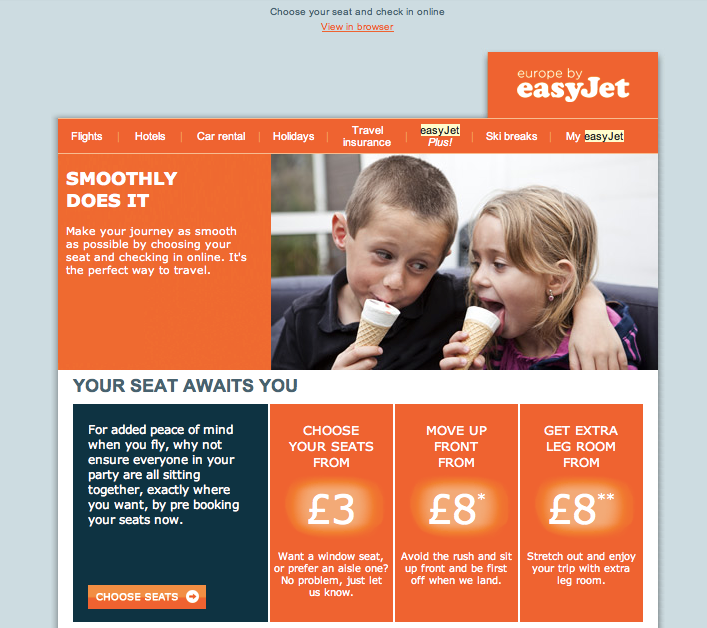
This email is sent after you book and aims to get you to upgrade your seating preference.
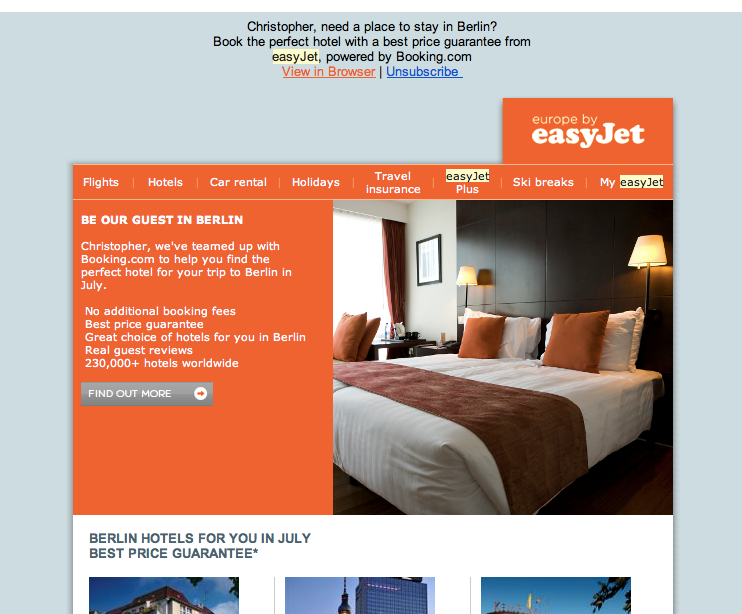
This email is sent with hotel deals.
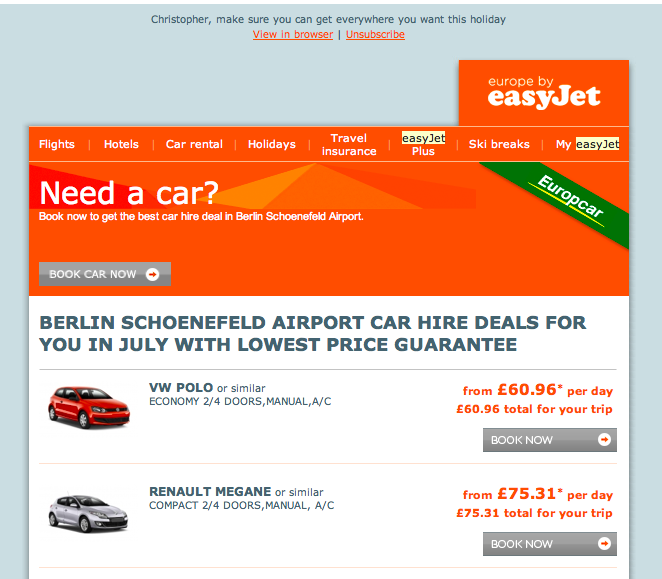
This email is sent offering car hire deals.
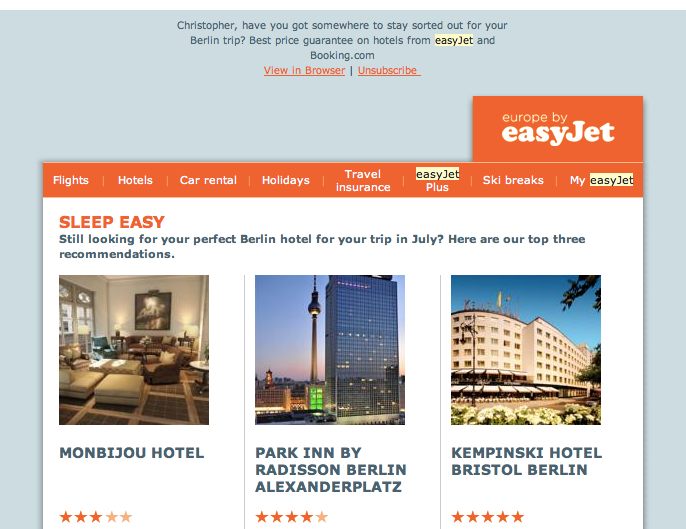
This email is sent offering hotel deals a second time, with a different format.
Customers receive more or less emails in the series based on what they’ve booked and which actions they’ve taken.
The point here is that EasyJet doesn’t just send one or two emails but build momentum from the time you book your ticket to the time you take your flight and use every opportunity along the way to provide useful information and extra service that will get you to your destination without any hassle. Along with that, they use the opportunity to maximize their conversion and upsell opportunities. Savvy use of series.
Takeaway: Use a series of emails to maximize the chances of conversion and to build trust and familiarity. Don’t go overboard but don’t send just one, single email!
2. Don’t miss the boat: Use your transactional emails for marketing
A huge portion of the emails sent by travel companies such as airlines and hotels are transactional emails. Flight confirmations, reservation updates, requests for more information and so on all fall into this category.
These are a huge part of the travel process and without these emails travelers and hosts alike would have a much harder time getting where they’re going.
When it comes to marketing, transactional emails have traditionally been seen as inconsequential: they’re a requirement not an opportunity.
…wrong!
Transactional emails give you a huge marketing opportunity for one main reason: they’re very likely to be read. The average open rate on transacitonal emails is virtual twice the average open rate of newsletters.
With that in mind, the sky is the limit in terms of what you can achieve (pun intended ;). Take this email from Thompson Hotels in New York. They use the header of their transactional email to encourage customers to subscribe to their social channels via Facebook, Twitter or Instagram.

A more direct approach is upselling other services or products on the side of a transactional email. The number of offers and the calls to action should always be tested but, as the primary goal of the email is to inform (rather than drive action) there is a LOT of value in including these alternative options.
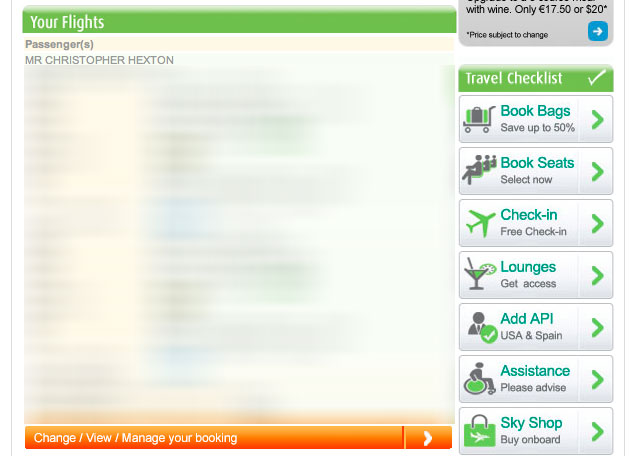
A final example comes from Vayama. Their ticket update email is long and extensive and, in amongst giving you a plethora of useful information on insurance, re-ticketing, support, etc. they include offers to purchase insurance, grab a special offer and a guide on how to request a change (which will cost you more money).
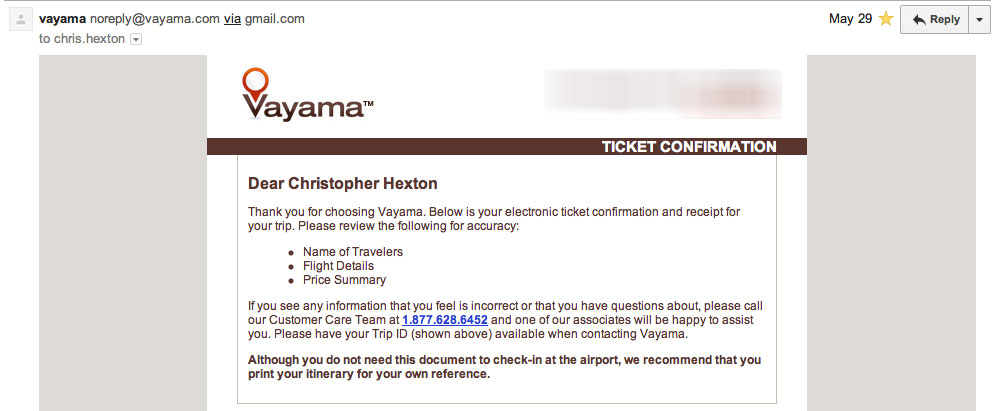
Takeaway: Think about the individual marketing message in all of your emails, even transactional ones. These have a much larger open rate than any other email type so they’re ideal for getting information and offer in front of your customers’ eyeballs.
3. Get to know your customers: be super-targeted
Being super targeted is tricky but with the power of web analytics you can track what your customers are doing, their preferences and use this data to send better emails.
In some instances, you can flat-out ask your customers for their preference. Fantastic travel search site Adioso does a great job of this, asking customers whether they want to ‘Watch Prices’ lets them send fantastically targeted emails.
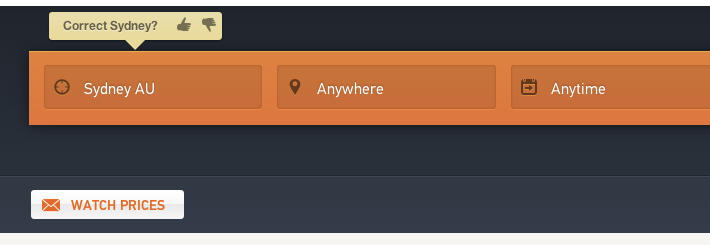
…this feature enables them to send emails like this:
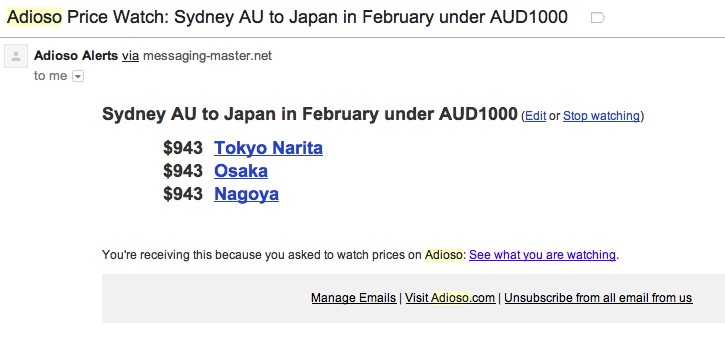
As we saw a little in point one above, EasyJet’s emails are a great example of extremely targeted emails that aim to get you to upgrade, pre-purchase, or buy related products and services. Not only do they email in series but they alter the emails based on your preferences and actions.
This makes a lot of sense and, given they have a significant amount of targeted information on your particular trip, they have the ability to give their lifecycle emails a lot of power.
Take the following example which not only offers hotels close to London but specifically gives you an offer on Gatwick’s parking. EasyJet could never send an email like this without understanding where their passengers are traveling to and when they are doing so:
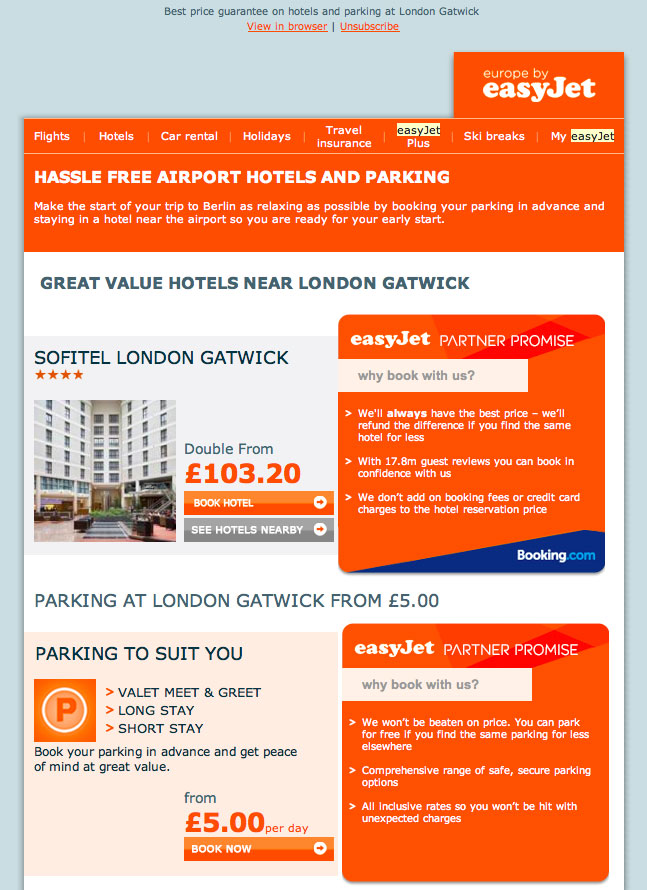
These examples show the power of using the details of your key customer lifecycle event to send super-targeted emails. In this instance, it’d be complete hit-and-miss for a company like EasyJet to send all of their customers’ random offers on London hotels (or parking, for that matter) so using the power of their primary lifecycle event (their flight purchases) EasyJet drive a lot of extra business!
This is reminiscent of one of Flightfox’s fantastic lifecycle email. By tracking customers that have initiated a flight contest but have not completed the process (by paying) they send an email that looks like this:
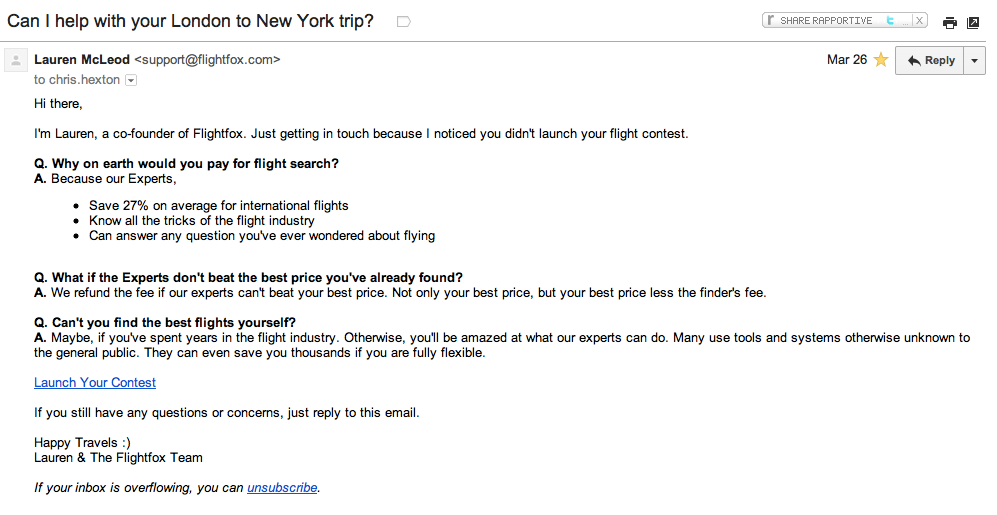
This is clearly a variation of the email that initially helped them increase their conversion rates by up to 20%.
Takeaway: Use your key customer lifecycle event and it’s associated meta-data to drive targeted emails that convert. If you have the information, use it! Vero makes it easy to track this sort of meta-data and use it to send targeted emails – you can read more in our docs).
4. Looks are important: HTML templates can be effective
Most emails you’ll receive from travel companies do use HTML and often employ complex templates. Although traditionally we’d argue that plaintext emails are generally as, if not more, effective than HTML emails there are two benefits that HTML email templates often provide:
- They enable you to flaunt your brand. This is particularly important in industries that rely on their brand. The travel industry is definitely in this situation: with such strong competition, it’s important to build a brand.
- You can present information in novel ways. Sometimes HTML emails allow you to improve the user experience. This could be through the use of forms, checklists, arrows, or similar visual elements.
Vayama employs a very simple HTML template that’s only real template is to present data in a table format and to show their brand in the top left.
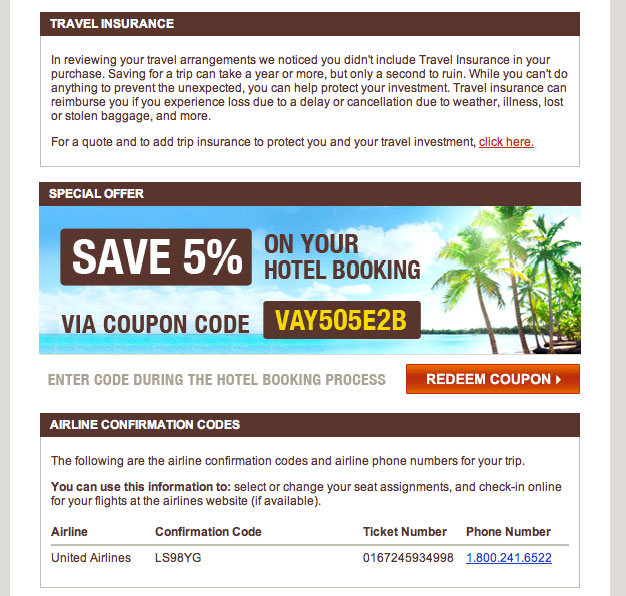
EasyJet’s templates can be quite sophisticated and make good use of visual cues to improve engagement and get users to click through.
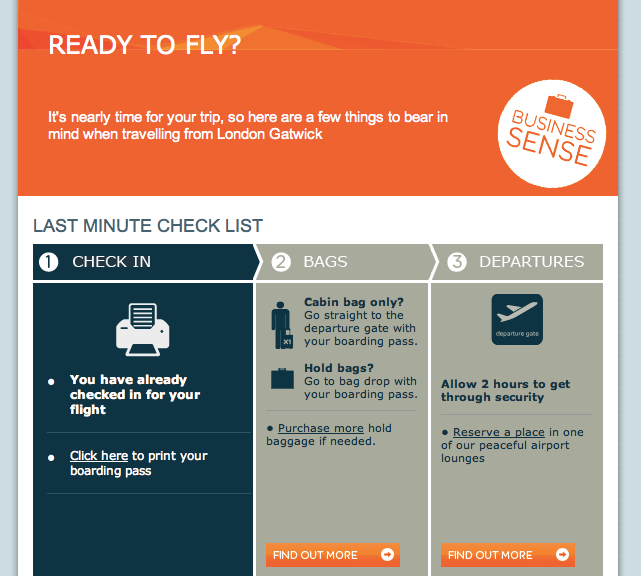
They always ensure their emails are extremely readable even with images are disabled:

The use of colors is also very powerful with EasyJet’s distinct orange appearing everywhere.
Takeaway: Use HTML templates where it makes sense. Images can re-enforce your brand and, if used correctly, can present your users with a better experience.
5. Save time: streamline your business with email
This might sound common sense but, aside from driving pure revenues and conversions, lifecycle email adds value to your business by removing manual processes.
By tracking what actions your customers have taken you can send emails that guide them toward certain actions – without having manual resources expend valuable time and effort chasing them up. This sometimes means you can get 80% of your customers to take action with a mere 20% of the previous effort.
The world of travel is full of requirements. Airlines use email to try and resolve as many inquires and hassles as possible before customers ever arrive at the airport.
Aer Lingus who use a series of emails (following point number one above!) to remind customers to fill out advanced-screening information prior to flying to countries like the US or Spain:
AER LINGUS API INFORMATION
EasyJet has a similar process in place to remind customers about the requirement to check in at home and a number of emails making it clear that check-in baggage is an extra that you have to choose. These sorts of emails are helpful for a range of reasons but certainly reduces the headaches of employees on the ground at these companies:
EASYJET CHECK IN
This is a great example of how you can use lifecycle email to drive customers toward a specific action.
Takeaway: Lifecycle emails provide value by reducing the number of tasks you have to complete and the manual human effort that your company expands. In no way will email completely replace a process but it can deliver a lot of value very quickly.
Prepare for taking off
Travel is an industry with a large array of moving parts. With extremely slim margins and a vast array of individual-level data, airlines, in particular, understand the power of email to drive upsells and cross-sells, future travel and revenue for themselves and their business partners.
So many players in this space provide great examples of how to do email marketing well, from simple templates, direct CTAs, and series to using email to replace manual processes.
Here’s what you should do next:
- Pick one of the points above and see how you can implement it in your business!
- Leave a comment and let us know other great examples of lifecycle emails you’ve seen from travel companies in the past.
Up, up and away!

